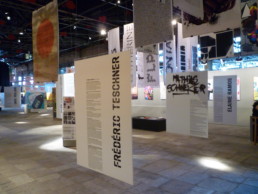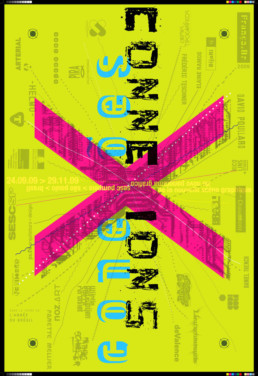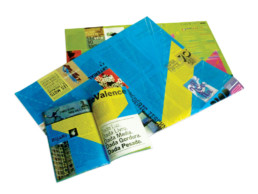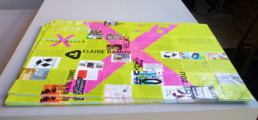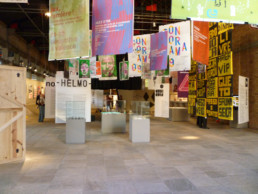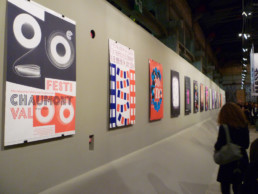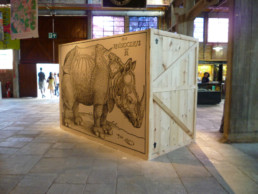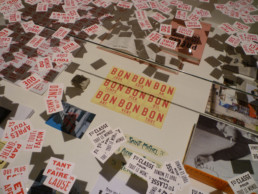Connexions
As part of the celebrations of France-Brazil Year, the exhibition Connexions >< Connections was conceived around the idea of authorial graphic design and brought together two dozen new French and Brazilian talents to reflect on the concepts of territoriality, identity and diversity. The event was held at SESC Pompeia and included workshops, lectures and creative sessions to explore the dialogue between the contemporary graphic production of the two countries.
Client
SESC-SP + CulturesFrance
Created in
São Paulo, 2009
Category
Poster + Exhibition
Curated by Rico Lins and Christelle Kirchstetter – former director of Pôle graphisme in Chaumont, France – , the exhibition offered an overview of new Brazilian and French design and went beyond the traditional posters, books and printed matter to dialogue with digital media, public spaces, contemporary art and vernacular manifestations.
Rico Lins +Studio was responsible for the graphic design and the exhibition project which were conceived to generate low environmental impact by reutilizing materials from previous exhibitions. The letter “X”, universal sign for interchange and multiplication, served as the project’s central element and was used with multiple meanings, from the letter common to both languages to the Roman numeral X which corresponded to the number of participants from each country. To reinforce the idea of balanced interchange, the designer established a symmetry that allowed the poster to be fixed in any position, with vivid colors recalling the contemporary landscape of graphic art.
Poster
The poster-folder gave continuity to the graphic concept of the poster. To generate production savings (by eliminating folds, staples and other types of finishing at the print shop) the public received a whole sheet of paper (66 x 96 cm) which contained, in seemingly random form, information about the designers who were participating in the exhibition as well as dotted/perforated lines and indications for creasing. Following the instructions for folding and cutting, visitors were able to assemble the catalog for themselves, interacting with object, texts and images. Upon assembly, the seemingly random contents were found to be perfectly organised and legible.

 Português do Brasil
Português do Brasil